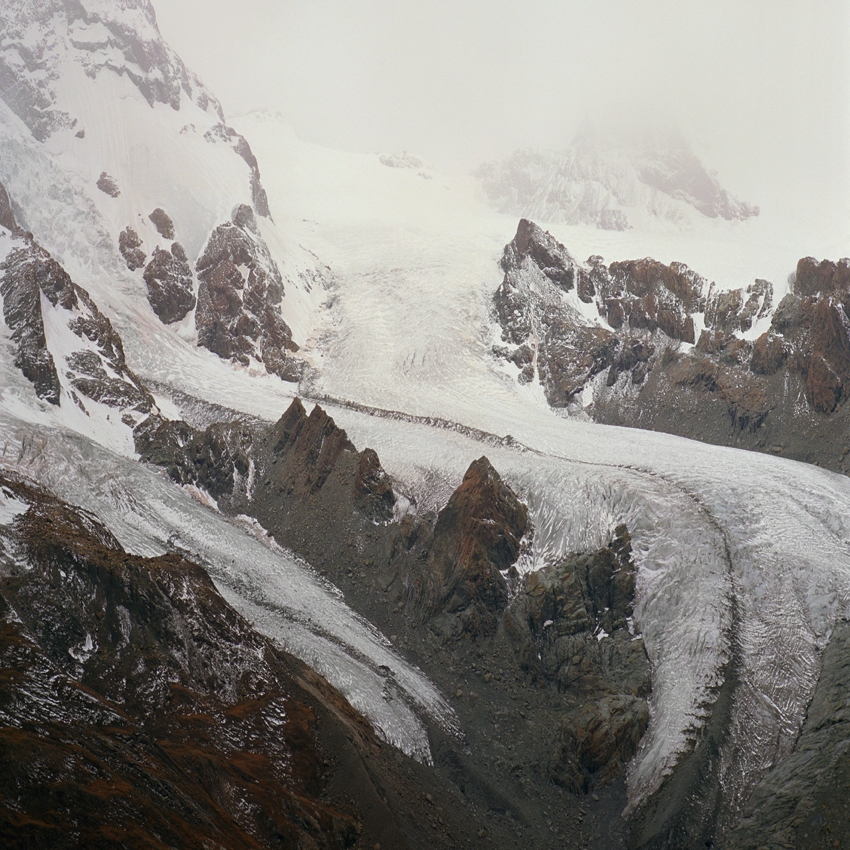Darren Almond’s landscape photographs are hard to look at, not because they are deceptive or concealing, but because we know what they show us would be invisible: time compressed into the apparent instantaneity of a photograph. This disjunction is manifested as the difference between darkness – they are taken at night – and the eerie, silver light a long exposure makes of it. There are other clues: rocks are in focus but leaves are blurred, while shadows seem invested with a spectrum of movement.
This sounds like photographic structuralism and, given the landscape motifs, the structuralism of early British conceptual art – such as the work of Richard Long or Ian McKeever – with its allegiances to the tradition of British landscape painting. Almond is torn between a conservative impulse to produce pictorial spectacles and a conceptualist desire to dematerialise the art object by making his subject what is absent or could not be seen. These tensions are confirmed by his presentation of photographs taken in Alpine landscapes portrayed by the German Romantic painter Carl Blechen in his ‘Amalfi Sketchbook’ of 1828–30, samples from which are hung in a separate room. The Blechen sketches are themselves poised between eighteenth-century Romantic landscape painting – with its grottoes, overhanging trees and distant castles – and the new realism of plein air oil sketching. In England, Constable was developing a similar technique. Blechen’s meticulous Zwei Grüne Blätter (undated) has the empirical fervour of a Constable cloud study. He seems to be discovering at the end of his brush that the facts could suffice. The tree at the centre of Blechen’s Landschaft mit Burg (undated) is even less idealised, its gestural application registering the blur of unpredictable perception, even as the mountain in the background, with its obligatory castled peak, might belong to a repertoire of Romantic backdrops. Almond’s photographs resume this dialectic, their blurred passages a realist index of a long exposure’s betrayal of the illusion of photographic instantaneity. Thrillingly, the exhibition intimates two manifestations of realism, separated by two centuries, each imposed upon an existing convention: in Blechen, on the artifice of Romantic landscape; in Almond, on the evidential claims of documentary photography.
This would be mere self-negating irony but for an existentialist dimension. The sense of the pictured place as a figment casts doubt on its existence. This uncertainty makes a photograph of an unexceptional bend in a river (Fullmoon@Spreewald, 2014) continuous with Almond’s early live-feed installations of the mid-1990s, in which an image of the interior of his unoccupied studio, projected in a gallery, brought the convention of live footage to spooky life, showing it to be unable to confirm the coexistence of a remote site. Ghosted by their unreal lighting as by the history they reiterate, Almond’s photographs combine spatial and temporal indeterminacy by connoting Blechen’s recording of the same views. Photographs of glacial tracks resemble the surface of another planet, their otherworldliness another sign for the unverifiability of the elsewhere that a photograph inconclusively witnesses.
Thirty-seven drawings of constellations also prove to be evidence of nothing but process. Here, Almond uses a dropper to place dots of acrylic onto black graph paper. With their grids signifying mathematical veracity, the drawings show the temerity of representing the universe reduced to arbitrary clusters of hand-painted dots. But the mind-boggling range of permutations in which the dots could be arranged is a metaphor for the limitation of what physicists call the ‘naked-eye universe’ – what we can see (and therefore draw) as distinct from what we know to be there. This distinction cuts both ways: as a critique of human credulity as well as of knowledge not based upon firsthand perception. Almond activates the cusp between the Romanticism of painterly abstraction – Malevich’s Black Square (1915), Pollock’s drip paintings – and representational realism. The series template is a mainstay of modernist painting, which here functions representationally by relativistically proliferating cosmologies, as though the exhibition pictured a series of parallel universes. That the drawings are also sellable works on paper, hung in a blue-chip gallery, adds another facet to Almond’s contrasting of materialism and idealism.
This article was first published in the April 2015 issue.
